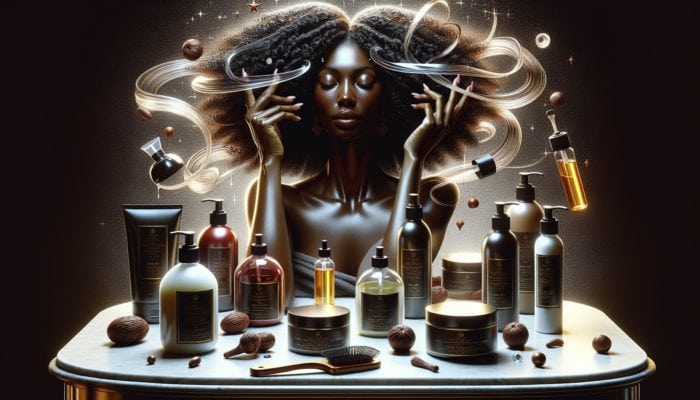Discover Effective Strategies to Overcome Dry Hair Ends
Identifying the Key Contributors to Hair Dryness and Damage

The experience of encountering dry hair ends is widespread, affecting countless individuals due to a multitude of environmental factors, heat styling, and chemical treatments. Prolonged exposure to elements such as the sun, wind, and pollution can deplete essential moisture from your hair, leading to a lacklustre and fragile appearance. Additionally, frequent usage of heat styling devices, including straighteners and curling irons, can fundamentally compromise the structure of your hair, making the ends more susceptible to damage. Moreover, chemical procedures—such as hair dyeing, perming, and relaxing—can exacerbate dryness by stripping away natural oils and moisture. This combination of factors not only results in split ends but also escalates hair breakage, underscoring the critical need for hydration. By embracing a holistic approach to your hair care regimen, you can significantly improve the state of your dry ends, fostering healthier and more resilient hair over time.
The Essential Role of Hydration in Achieving Luscious Hair
Hydration is not merely about aesthetics; it is vital for the overall health and vibrancy of your hair. When hair ends become dry and brittle, it can lead to a range of problems, including split ends and heightened breakage, which can severely limit your styling options and give your hair a dishevelled look. By concentrating on the most effective methods to hydrate dry hair ends, you can successfully replenish moisture levels, enhance elasticity, and boost the natural shine of your hair, which is essential for optimal management. Additionally, well-hydrated ends serve as a protective barrier against further damage, safeguarding your hair from environmental aggressors. Therefore, prioritising hydration is not just a temporary fix; it is a crucial investment in the long-term vitality and resilience of your hair.
How to Recognise the Signs of Dehydration in Your Hair
Identifying the symptoms of dehydration in your hair is imperative for prompt and effective action. A brittle texture, a discernible lack of shine, and increased frizz are all significant indicators that your hair ends are in urgent need of moisture. When hair becomes excessively dry, it often feels coarse to the touch and may become prone to tangling, causing frustration during styling sessions. Furthermore, inadequate hydration can undermine your hair’s natural bounce, leaving it flat and lifeless. By closely monitoring these warning signs, you can implement the most effective strategies to hydrate dry hair ends before the situation deteriorates, ensuring your hair remains radiant and healthy.
Implementing Proven Techniques for Moisturising Your Hair Ends

Moisturising dry hair ends is critical for revitalising their health and enhancing their overall appearance. Among the most effective methods are deep conditioning treatments, which penetrate deeply into the hair shaft, delivering intensive hydration that can transform the texture of your hair. The use of leave-in conditioners serves a dual purpose, providing much-needed moisture while also protecting your hair throughout the day. Furthermore, integrating natural oils such as argan, coconut, or jojoba into your hair care routine can yield remarkable results. These oils not only hydrate but also infuse the hair with essential fatty acids and vitamins, promoting improved overall health. By consistently employing these techniques, you can ensure your hair remains manageable, vibrant, and healthy. Choosing the right moisturising methods can greatly elevate the condition of your hair ends, unlocking their full potential for beauty and strength.
Establishing Preventive Strategies to Avoid Hair Dryness
Prevention is always preferable to remedy, especially in the pursuit of healthy hair. Safeguarding your hair from damaging heat and sun exposure is crucial for its long-term well-being. Always apply a heat protectant prior to using styling tools, and consider donning hats or scarves when exposed to harsh sunlight to shield your hair from damaging UV rays. Additionally, limiting chemical treatments can significantly reduce the likelihood of developing dryness and damage. Regular trims represent another essential practice; they help remove split ends and damaged hair, paving the way for healthier growth. By integrating these preventive strategies into your hair care routine, you lay a solid foundation for vibrant, well-hydrated hair that is less susceptible to damage.
Everyday Practices for Maintaining Optimal Hydration Levels
Establishing a Reliable Conditioning Routine

Incorporating a consistent conditioning regimen into your hair care routine can yield remarkable results in sustaining optimal moisture levels. Daily conditioning is a highly effective approach to replenish lost moisture and keep your hair ends hydrated and silky smooth. When you apply conditioner, the product envelops each strand, providing a protective layer against environmental stressors. Many modern conditioners are formulated with advanced ingredients that help seal in moisture, making them ideal for everyday use. Opt for conditioning products specifically designed for dry or damaged hair to maximise their benefits. By committing to a regular conditioning routine, you’ll observe a significant enhancement in the texture and vitality of your hair, particularly at the ends, leading to an overall healthier appearance.
Maximising the Advantages of Leave-In Treatments for Hydration
Leave-in conditioners can be transformative in maintaining hydration levels within your hair. They provide continuous moisture throughout the day, acting as a protective barrier against environmental damage that could lead to dryness. Unlike traditional conditioners, leave-in treatments are designed to be applied to damp hair and left in without rinsing, allowing their hydrating properties to penetrate deeper into the hair shaft. These products typically contain ingredients designed to lock in moisture, making them particularly effective for individuals struggling with frizz and dryness. By incorporating a leave-in treatment into your daily hair care routine, you not only boost moisture levels but also simplify styling, ensuring that your hair remains luscious, manageable, and healthy.
Understanding How Protective Styling Enhances Moisture Retention
Protective styling is more than just a passing trend; it is a vital technique for preserving moisture in your dry hair ends. Hairstyles that minimise exposure to harsh environmental elements can greatly assist in maintaining hydration and preventing breakage. For example, styles such as braids, buns, and updos can shield your hair from the damaging effects of wind and sun while also reducing friction that could lead to damage. Additionally, using satin or silk scarves at night can help minimise moisture loss during sleep, contributing to healthier hair. By embracing protective styles, you can enjoy a variety of versatile looks without compromising the health and vitality of your hair. Think of protective styling as a safeguard, ensuring that your hair remains hydrated and resilient for extended periods.
Utilising Natural Oils for Effective Moisturisation
Natural oils, such as argan and coconut oil, are potent allies in the battle against dry hair ends. These oils effectively penetrate the hair shaft, delivering deep nourishment and hydration often unmatched by conventional moisturising products. Rich in essential fatty acids, antioxidants, and vitamins, these oils not only hydrate but also strengthen the hair, significantly reducing the risk of breakage. You can apply these oils in various ways—whether as a pre-wash treatment, a finishing touch after styling, or as a leave-in solution. The versatility of these oils makes them indispensable in any hair care regimen focused on moisture retention. By integrating moisturising oils into your routine, you can rejuvenate your dry ends into soft, manageable locks that exude life and vitality.
Utilising Hydrating Mists for Quick Hair Refreshers
Hydrating mists offer a delightful and convenient method to refresh your hair throughout the day. Formulated with water and beneficial ingredients, these mists provide an instant moisture boost, making them an excellent solution for combating dry hair ends. Spraying a hydrating mist onto your hair not only revitalises it but also enhances its natural shine, resulting in a healthier overall appearance. Many mists contain enriching components such as aloe vera or glycerin, which further amplify the hydration process. Keeping a bottle in your bag allows for on-the-go usage, ensuring your hair remains fresh and nourished throughout the day. This simple yet effective technique can significantly elevate the way your hair looks and feels, contributing to overall hair health.
Exploring Natural Remedies for Effective Hair Hydration
Harnessing the Benefits of Coconut Oil for Deep Hydration
Coconut oil is not merely a passing trend; it is a time-honoured remedy renowned for its exceptional moisturising properties. This oil penetrates the hair shaft more effectively than many other oils, delivering deep hydration capable of reviving even the driest ends. The lauric acid found in coconut oil possesses antimicrobial properties, making it an excellent choice for those concerned about maintaining scalp health. To effectively utilise coconut oil, apply it generously to the ends of your hair, massaging it in to encourage optimal absorption. You may choose to leave it on for a couple of hours or overnight for a more intensive treatment. By incorporating coconut oil into your hair care regimen, you’ll observe a remarkable transformation in the texture and overall health of your ends.
Utilising Aloe Vera Gel for Soothing and Hydrating Benefits
Aloe vera gel is a traditional remedy esteemed for its soothing and hydrating qualities. Packed with vitamins and amino acids, aloe vera can significantly benefit dry hair ends by providing essential moisture and nourishment. Applying aloe vera gel directly to your hair not only hydrates but also promotes a healthy shine, enhancing the overall appearance of your hair. The high water content in aloe vera assists in locking in moisture, creating a protective barrier against environmental damage. You can use aloe vera as a leave-in treatment or mix it with your regular conditioner for an extra hydration boost. The versatility of aloe vera makes it a must-have in your natural hair care arsenal, ensuring your hair maintains optimal hydration levels.
Creating a Honey and Water Mask for Natural Hydration
A honey and water mask is a simple yet effective DIY remedy that acts as a natural humectant. Honey works wonders by attracting moisture to the hair, ensuring that your ends remain hydrated for extended periods. To create this mask, simply combine honey with water until you achieve a runny consistency. Generously apply the mixture to your hair ends and allow it to sit for approximately 30 minutes before rinsing thoroughly. This treatment is particularly beneficial for individuals with colour-treated or chemically processed hair, as it helps to restore moisture levels while enhancing overall shine. Regular use of a honey and water mask can keep your hair looking vibrant, hydrated, and full of life.
Combining Avocado and Olive Oil for Deep Nourishing Effects
Avocado is a nutrient powerhouse, brimming with healthy fats, vitamins, and minerals essential for sustaining optimal hair health. When paired with olive oil, the outcome is a deeply nourishing treatment capable of hydrating even the driest ends. The fatty acids in avocado penetrate the hair shaft effectively, while olive oil aids in locking in moisture and enhancing overall shine. To prepare this treatment, simply mash a ripe avocado and mix it with a tablespoon of olive oil, then apply it to your hair, concentrating on the ends. Leave this luxurious treatment on for 30 to 60 minutes before rinsing thoroughly. This effective combination not only hydrates but also improves elasticity, making it an excellent choice for anyone looking to rejuvenate their dry hair ends.
Making Informed Choices About Hair Products
Essential Hydrating Ingredients to Seek in Hair Care Products
When selecting hair products specifically formulated to combat dry hair ends, it is crucial to focus on ingredients known for their hydrating properties. Look for formulations that include hyaluronic acid, glycerin, and natural oils like jojoba or almond oil. Hyaluronic acid is celebrated for its remarkable ability to retain moisture, while glycerin functions as a humectant that draws moisture from the environment. Natural oils not only provide hydration but also nourish the hair, supplying essential nutrients that promote overall health and vitality. By choosing products enriched with these key ingredients, you can effectively tackle dryness and enhance the vitality of your hair, leading to healthier ends.
Recognising Harmful Chemicals to Avoid in Hair Care Products
Equally as important as knowing which ingredients to seek out is understanding which ones to avoid. Harsh chemicals, such as sulfates and alcohols, can strip moisture from your hair, exacerbating dryness and causing damage. Sulfates, often present in many shampoos, can lead to excessive dryness by removing natural oils from the hair. Likewise, alcohols, particularly short-chain alcohols, can further dry out your hair ends, causing frizz and breakage. Always scrutinise product labels carefully, opting for sulfate-free and alcohol-free alternatives to help maintain the moisture balance in your hair. This cautious approach will support your efforts in discovering the most effective methods to hydrate dry hair ends efficiently, ensuring your hair remains healthy and vibrant.
Exploring Various Product Types for Superior Hair Care
When addressing dry hair ends, it’s advantageous to consider a range of product types tailored to your specific needs. Deep conditioning masks are particularly beneficial for intensive hydration, delivering concentrated doses of moisture that can rejuvenate your hair. Leave-in sprays provide convenient hydration throughout the day, while serums specifically designed for dry ends can add an extra layer of shine and protection. Don’t hesitate to experiment with different products to find what works best for your hair type and lifestyle. The right combination of product types can create a comprehensive hydrating regimen that transforms your hair from dry and brittle to soft, luscious, and vibrant.
Enhancing Hydration Through Dietary and Lifestyle Adjustments
Emphasising Sufficient Hydration and Water Intake
Hydration begins from within, and consuming adequate amounts of water is critical for maintaining overall health, including the health of your hair. When your body is sufficiently hydrated, it positively reflects in the condition of your hair, contributing to moisture retention at the ends. Aim to drink around 2 to 3 litres of water daily, adjusting this amount based on your activity level and environmental conditions. If you find it challenging to meet your daily water intake, consider infusing it with fruits or herbs for added flavour and appeal. This simple adjustment can yield significant benefits, enhancing not only the appearance of your hair but also your overall well-being and vitality.
Incorporating Nutrient-Dense Foods into Your Regular Diet
Your dietary choices significantly influence your hair's overall health. Introducing foods rich in omega-3 fatty acids, vitamins, and minerals can support hydration and promote hair vitality. Fatty fish, such as salmon, along with avocados, nuts, and seeds, are excellent sources of omega-3s that nourish the scalp and encourage healthy hair growth. Additionally, foods abundant in vitamins A, C, and E, as well as biotin, can greatly enhance moisture retention in your hair. Leafy greens, berries, and sweet potatoes contribute to a nutrient-rich diet that fosters healthy, hydrated hair. By being mindful of your dietary choices, you can have a substantial impact on the condition of your hair ends, ensuring they remain vibrant and well-nourished.
Avoiding Dehydrating Behaviours for Healthier Hair
Your lifestyle choices greatly affect your hair's hydration levels. Limiting your intake of caffeine and alcohol is vital, as both can lead to dehydration, adversely affecting not only your hair but also your entire body. Caffeine possesses a diuretic effect, which can result in increased water loss, while excessive alcohol consumption can dehydrate your system. If you indulge occasionally, balance it with sufficient water intake and hydrating foods to counteract these effects. Making these small yet impactful adjustments can significantly improve your hair’s moisture levels, ensuring that your ends remain vibrant, healthy, and well-hydrated.
Exploring Professional Treatments for Intensive Hair Hydration
Investing in Professional Deep Conditioning Solutions
For those grappling with severely dry hair ends, professional deep conditioning treatments can deliver the intensive hydration that at-home products may struggle to provide. These salon services utilise high-quality formulations that penetrate deeply into the hair shaft, offering unparalleled moisture and nourishment. Many salons offer specialised treatments tailored to individual hair types and needs, ensuring the best possible results. Regular appointments for deep conditioning can markedly transform dry hair into a manageable and vibrant mane. Investing in these professional services can yield long-lasting benefits, helping to maintain the health and beauty of your hair over time.
The Importance of Regularly Trimming Split Ends for Optimal Hair Health
Regular trims are essential for maintaining healthy hair, particularly in the fight against dryness. Cutting split ends removes damaged hair, facilitating healthier growth and improving the overall appearance of your hair. While it may seem counterproductive to cut hair while aiming for length, regular trims can actually promote healthier growth. Aim for a trim every six to eight weeks, adjusting based on your hair's condition. By prioritising trims, you can enhance hydration and ensure your hair remains vibrant, resilient, and less susceptible to further damage.
Utilising Keratin Treatments for Optimal Moisture Restoration
Keratin treatments provide an excellent option for restoring moisture and smoothness to dry and damaged hair ends. These professional treatments work by infusing keratin, a vital protein in hair, back into the strands. The result is smoother, shinier hair that is significantly less prone to frizz and damage. While keratin treatments can deliver lasting results for several weeks, they require proper aftercare to maintain their effectiveness. By opting for a keratin treatment, you can achieve enduring hydration and a polished look that withstands the test of time, making it a valuable addition to your hair care regimen.
Investing in Scalp Treatments for Comprehensive Hair Health
A healthy scalp is the foundation of beautiful hair. Professional scalp treatments can nourish the scalp and promote healthier hair growth, which, in turn, can help mitigate dryness at the roots. Many scalp treatments include exfoliating properties that eliminate dead skin cells, thereby enabling better product absorption and improved hydration. By investing in scalp treatments, you create an ideal environment for hair growth, ensuring that your ends receive the moisture and care they need for a healthy appearance.
Consulting Colour Correction Services for Restoring Damaged Ends
If your dry hair ends are a result of previous colouring mishaps, colour correction services can assist in restoring both moisture and vibrancy. These professional treatments concentrate on repairing and revitalising damaged hair, often incorporating deep conditioning formulas to enhance hydration. Colour correction may also involve adjusting the hair tone to eliminate unwanted brassiness or fading, leading to a more cohesive appearance. By consulting with a professional colourist, you can ensure that your hair not only looks its best but is also well-hydrated and healthy, addressing the underlying causes of dryness.
Proactive Strategies for Preventing Future Hair Dryness
Minimising Heat Styling to Safeguard Your Hair's Integrity
Excessive heat styling is a primary contributor to dry hair ends, and reducing the use of heat tools such as blow dryers, flat irons, and curling wands can significantly decrease the risk of dehydration and damage. Whenever you style your hair with heat, be sure to apply a high-quality heat protectant to create a barrier against thermal damage. Additionally, consider air-drying your hair whenever possible or using lower heat settings on styling tools to protect your hair's integrity. By adopting these straightforward practices, you can shield your hair from future dryness, ensuring that your ends remain hydrated, healthy, and resilient over time.
Addressing Common Questions Regarding Hair Hydration
What Are the Principal Causes of Dry Hair Ends?
Dry hair ends can arise from a variety of environmental factors, heat styling, and chemical treatments. These issues can lead to split ends and breakage, negatively impacting the hair's overall health and aesthetic.
How Can I Naturally Hydrate My Dry Hair Ends?
Natural remedies, such as coconut oil, aloe vera gel, and honey masks, can effectively hydrate dry hair ends, restoring moisture and enhancing shine.
What Key Ingredients Should I Seek in Hair Products for Hydration?
Look for products enriched with hydrating ingredients such as hyaluronic acid, glycerin, and natural oils while steering clear of harsh sulfates and alcohols.
How Often Should I Trim My Hair?
Regular trims every six to eight weeks are vital for removing split ends, promoting healthier hair growth, and maintaining optimum hydration.
Can My Diet Influence Hair Hydration?
Absolutely! A diet rich in omega-3 fatty acids, vitamins, and minerals supports hair health and hydration, contributing to well-hydrated ends.
Are Professional Treatments Beneficial for Dry Hair?
Yes, treatments like deep conditioning and keratin treatments can deliver intensive hydration and improve the overall condition of dry hair ends.
How Can I Maintain Moisture in My Hair Throughout the Day?
Utilising leave-in conditioners or hydrating mists can refresh your hair during the day, keeping your ends moisturised, manageable, and looking their finest.
What Are the Best Oils for Hydrating Hair Ends?
Oils such as argan, coconut, and jojoba are excellent options for deeply hydrating and nourishing dry hair ends, preventing further damage.
Is It Advisable to Use Heat Styling Tools on Dry Hair?
It is best to limit heat styling on dry hair, as it can exacerbate dryness and lead to further damage. Always use a heat protectant when styling.
What Are the Indicators of Dehydrated Hair?
Signs of dehydration include a brittle texture, lack of shine, and increased frizz. Regularly assess your hair's condition to implement timely interventions.
Connect with Us on Facebook for More Tips and Updates!
The Article: Best Ways to Hydrate Dry Hair Ends: Essential Tips appeared first on Amitys Hair Salon.
The Article Hydrate Dry Hair Ends: Essential Tips for Healthy Locks Was Found On https://limitsofstrategy.com

